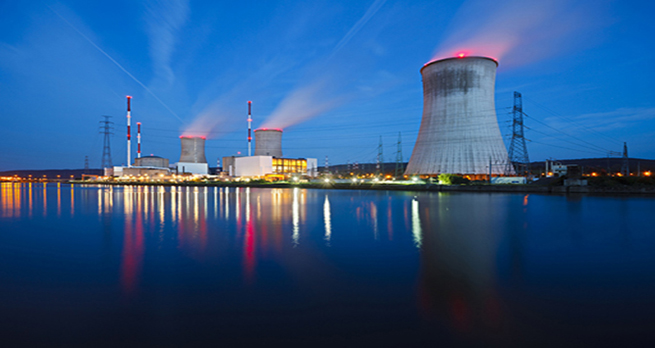3.1.2 Accidents at Three Mile Island and Chernobyl
Download this video clip.Video player: ou_futurelearn_nuclear_energy_vid_1055.mp4


Transcript
WALTER CRONKITE
Good evening. The world has never known a day quite like today. It faced the considerable uncertainties and dangers of the worst nuclear power plant accident of the atomic age.
NARRATOR
At the Three Mile Island nuclear facility in Pennsylvania, a distress call had been sounded after a partial meltdown of the core. Somehow there had been a loss of cooling water from the reactor, and no one was sure what was happening.
MAN
The operators were so complacent and so sure that their machine was guaranteed that they took it for granted that a particular valve, a pilot operated valve wasn't malfunctioning. Everything told them it was, but they didn't believe what they saw. Nor did they believe the way in which the reactor was performing.
NARRATOR
As the coolant spilled out of the reactor, it began to overheat, and the core began to burn. The situation was serious, but no public warning was given for several hours.
MAN
The reactor boiled and melted down. The secondary containment contained the radioactive products, although some iodine was released. And although supposedly only 12,000 people were recommended to evacuate, at the end of the day, over 480,000 people self-evacuated.
NARRATOR
It was claimed that no one was directly contaminated by the fallout, but the incident at Three Mile Island did damage the nuclear programme in the US.
MAN
Here you had a multi-billion dollar plant, where one single two dime component failed, and that completely wrote down that capital investment. No repair. The whole thing - shot. Lost.
NARRATOR
The Three Mile Island incident fueled a further growth in the anti civil nuclear power movement worldwide. But back in the UK, a new conservative government decided that expansion of nuclear power was needed to help stave off a future energy crisis. They turned to the US designed PWR for their next nuclear power station, and the first was built at Sizewell.
This was meant to be one of several new PRWs to be built in the UK, but in the late 1980s, nuclear power suddenly seemed less attractive again.
NEWSCASTER
Good evening. A much clearer picture has emerged tonight of what may have happened at the nuclear power station in Chernobyl. The Russians had already admitted that it is a disaster.
MAN
What happened at Chernobyl was effectively the operators, rather like Three Mile Island, disregarded the obvious signs.
NARRATOR
Scientists at the facility were trying to test whether the reactor could keep itself stable should there be a loss of power from the grid.
MAN
They arranged with the grid, the national grid controller, to run this experiment where they would deliberately isolate themselves from the power grid, and run their turbines on to self generate.
NARRATOR
Unfortunately, there was a long delay before they could start the test. During this period, the reactor was kept on standby at low power. But the delay caused a disastrous side effect.
MAN
That introduced what's called xenon, which is a neutron absorbing fission product, in the fuel. That meant the control rods had to be pulled out of the reactor as the xenon level was built up at low power.
When they started the experiment, that meant they had a spike of fast neutrons, which got to the xenon and killed the xenon off, flashed the xenon off, and it meant the controllers had to go in very fast. Couldn't get them in fast enough. The whole thing just went into a super critical condition, and then blew up.
NARRATOR
31 staff and firefighters died, either immediately or soon after. Many thousands of others were exposed to potentially dangerous levels of radiation. The cloud of radioactive material thrown up from the reactor spread across Europe and beyond.
Interactive feature not available in single page view (see it in standard view).
Accidents occurred at the Three Mile Island nuclear facility in Pennsylvania and the Chernobyl nuclear power station.
(Remember that PWR stands for pressurised water reactors.)
In the next section, you will consider what could be learned from these incidents.
